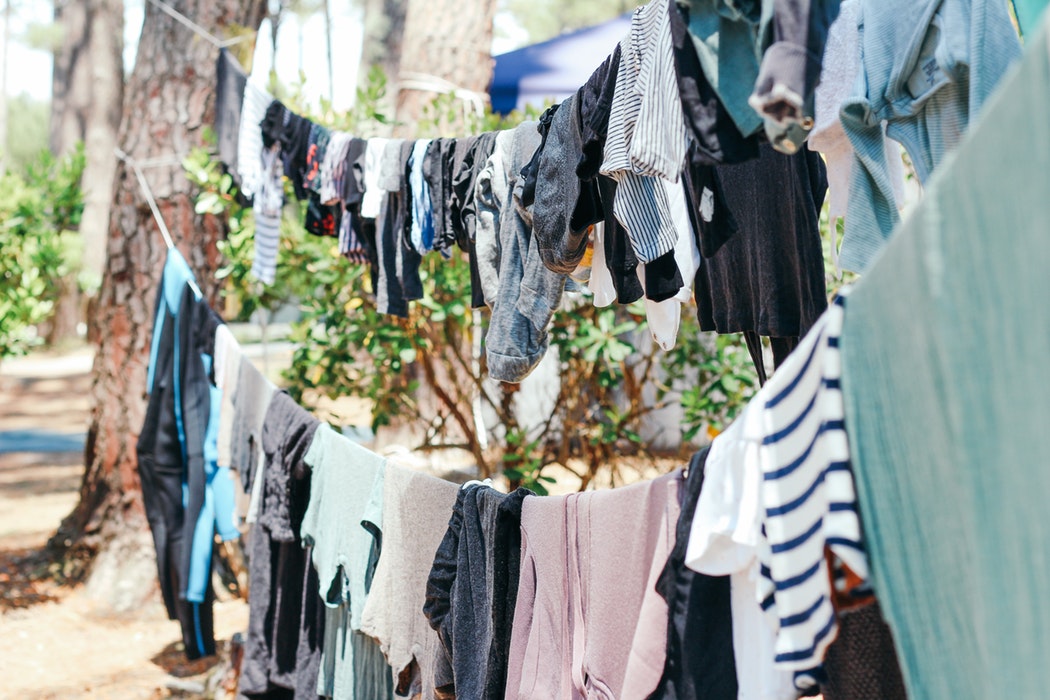Anyone short on closet space knows the struggle of the rotating wardrobe. Winter ends and then it’s time to pull out your shorts and t-shirts and store your winter clothes elsewhere.
But where to store winter clothes? Are they safe in the garage or attic? Properly storing winter clothes requires some prep work. Make sure your clothes look (and smell) pristine next winter by following our winter clothing storage advice.
We’re answering some of your questions and giving you some bright ideas to make the most of your space as you learn the best way to store your clothes when you’re not wearing them.
How do you prepare winter clothes for storage?

Step 1: Launder everything!
Even if they don’t look dirty, make it a point to clean your winter clothes before you store them. It can mean everything when it comes to the condition of your clothes in storage.
What about clothing that needs to be hand washed or dry cleaned?
- You may have never gotten that cashmere sweater dry cleaned in the past. But it’s essential to do so before you store it.
- Dirty clothes can deteriorate while they’re in storage because even subtle body oils on clothing can attract moths and also create an odor that can be nearly impossible to remove once months have passed.
Step 2: Use deodorizers.
No matter where you store your clothes, there’s a chance that things can start smelling a little musty over the warm summer months. Include a few drops of lavender essential oil or dryer sheets inside of each container or garment rack.
Should I hang or fold winter clothing?

As a general rule, natural fiber fabrics should be folded. Fold synthetic fabrics with acid-free tissue in between the folded areas. More specifically, consider the following:
- Sweaters – Fold and place in plastic bins or fabric storage bags. Don’t cram lots of sweaters in one container or mold and mildew could form.
- Winter coats – Zip up zippers, button the buttons, and gently fold coats made of leather, wool, or faux fur so they keep their shape. If you have a coat of real animal fur, hang it up.
- Delicates – Remove from plastic dry-cleaning bags, wrap in acid-free tissue paper, and store in cotton garment bags.
- Shoes – Pack with tissue paper to help them hold their shape and store them in plastic bins.
- Boots – Put a boot form in each boot to help it hold its shape; store boots on their sides in plastic bins with a pillowcase or an old shirt in between each pair.
- Casual shirts and jeans – Fold or roll and store in a plastic storage bin.
What is the best way to store winter clothes?

It’s tempting to use cardboard boxes to store your winter clothes. They’re cheap (or even free), and they fold up flat when you’re not using them.
But cardboard is acidic and is susceptible to water damage. It also contains glue and crevices that can attract insects and pests.
Use clear plastic totes.
- Store winter clothing inside sealed plastic totes that will prevent water damage and other mishaps.
- Consider purchasing clear bins instead of opaque ones. This way you can see what you’re storing.
- Pack like clothes together and use a label maker to organize each bin by type. Categories for individual bins might include sweaters, coats, or accessories.
Clothing storage hack:
Utilize plastic zipper comforter bags to store winter clothing underneath your bed.
How do you store winter clothes in a small room?

If you don’t have any offsite storage space or closet space available for winter clothes, get creative with storage in a small room. For clothes that need to be hung, consider an open or enclosed rolling garment rack.
Utilize empty wall space.
- Hang your clothes on the rack and store it on an empty wall.
If your rack doesn’t include an enclosure, cover it with a cotton sheet so that the clothes won’t become dusty. - Make sure you’re deliberate about how you pack up your winter clothes on the rack. Hang like items together and coordinate each item by color or family member.
- Make hanging labels using thick ribbon and a sharpie. Tie the ribbon label directly to the rack or on hangers to separate categories.
Read Also: How to Store Clothes When You Don’t Have a Closet
Can winter clothes be stored in a garage or attic?

When deciding where to store winter clothes, keep the acronym CCDD in mind. Always store your winter clothing in a cool, clean, dry and dark location.
Store in a cool, clean, dry, dark location.
Cool and dry are the two more important factors for clothing storage, and ignoring any of these factors could damage clothing. Look storage locations outside a garage or attic because the temperature changes in those areas can be too extreme.
However, there are many options for storing your winter clothes, even when you don’t have an extra closet. Carve out extra space under a bed or stack old suitcases to create a makeshift table.
If your clothing collection is valuable (perhaps you’re storing a large vintage coat collection), consider renting a cheap climate-controlled storage unit in the offseason for the short-term.
Use these tips and be confident that your winter clothes will be protected during the offseason. But before you store everything away, remember to keep a few winter outfits in a spot where you can quickly access them in case Mother Nature throws you a curveball.
Pin for later:

This post originally appeared on the Life Storage blog on 5/31/17 and was revised on 4/16/19 to provide new information.






